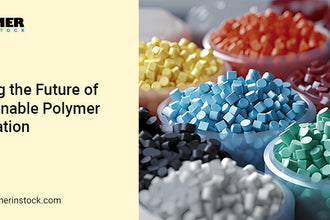
The global polyethylene (PE) pipes market is entering a pivotal growth phase driven by rapid urban development, rising demand for sustainable pipeline systems, and large-scale infrastructure upgrades across water, gas, and industrial sectors. With governments and private organizations investing heavily in resilient and low-maintenance piping networks, PE pipes are becoming the preferred choice across industries. The market is set for significant expansion between 2025 and 2035, supported by technological advancements, the shift toward recyclable materials, and the growing adoption of high-performance HDPE and MDPE pipes.
This comprehensive overview explores the key trends, drivers, applications, and future opportunities shaping the global PE pipes market.
What Makes Polyethylene (PE) Pipes a Preferred Choice?
Polyethylene pipes are engineered for durability, flexibility, and long service life. Their resistance to corrosion, chemicals, and environmental stress makes them highly reliable for long-term installations. Compared to traditional metal and PVC pipes, PE pipes offer superior adaptability, leak resistance, and cost-effectiveness.
Some of their widely recognized advantages include:
-
Long service life with minimal maintenance
-
Lightweight construction for easy transportation and installation
-
High flexibility suitable for uneven terrains
-
Excellent resistance to corrosion, chemicals, and abrasion
-
Suitability for both high-pressure and low-pressure systems
-
Strong sustainability profile with increasing recyclability
These advantages continue to drive global adoption across municipal, industrial, agricultural, and commercial applications.
Market Growth Drivers for 2025–2035
1. Rising Investments in Water Infrastructure
Countries worldwide are upgrading aging water supply networks and investing in new systems to meet rising demand. PE pipes have become the go-to material due to their long life span, leak resistance, and low maintenance costs. Municipal projects, rural water pipelines, and large-scale drinking water networks increasingly prefer PE piping systems.
2. Expansion of Gas Distribution Networks
Natural gas and LPG distribution projects are widely adopting MDPE and HDPE pipes due to their safety, durability, and compatibility with buried networks. Their flexibility and crack resistance make them a reliable solution for modern gas grids.
3. Growing Demand in Agriculture and Irrigation
Irrigation systems, drip lines, and agricultural water networks rely heavily on PE pipes. The increasing global focus on efficient water management in farming is accelerating the adoption of HDPE pipes in particular.
4. Replacement of Metal and PVC Pipes
Governments and private industries are switching from traditional metal pipelines to PE due to corrosion issues, heavy maintenance costs, and shorter lifespans of metal alternatives. The shift toward lightweight, reliable, and sustainable materials strongly favors PE pipes.
5. Advancements in Pipe Manufacturing Technologies
Continuous research has led to innovation in high-pressure PE pipes, multi-layer pipes, and leak-resistant systems. Advanced PE100 and PE100-RC grades are becoming standard for demanding applications.
6. Surge in Urbanization and Construction Activities
Growing cities require efficient drainage, sewage systems, and wastewater pipelines. PE pipes are increasingly used in underground networks due to their resilience, flexibility, and long-term stability.
7. Increased Focus on Sustainability
With industries adopting eco-friendly materials, the recyclability of PE pipes is driving market preference. Many manufacturers are developing sustainable and recyclable PE solutions to meet global environmental standards.
Market Segmentation Overview
By Material Type
-
HDPE (High-Density Polyethylene) – Dominant segment due to strength and versatility
-
MDPE (Medium-Density Polyethylene) – Preferred for gas distribution
-
LDPE (Low-Density Polyethylene) – Used in low-pressure systems and agriculture
By Application
-
Water Supply
-
Gas Distribution
-
Sewage and Drainage
-
Irrigation
-
Telecom and Electrical Conduits
-
Industrial Process Piping
By End-Use Industry
-
Municipal Infrastructure
-
Oil & Gas
-
Agriculture
-
Industrial Manufacturing
-
Construction
Regional Growth Insights
Asia Pacific
Expected to remain the market leader due to rapid urbanization, infrastructure expansion, and strong government investments in water and sewage systems.
Middle East & Africa
Large-scale water supply, desalination distribution, and gas pipeline projects are boosting demand for HDPE and MDPE pipes.
Europe
Strict sustainability regulations and infrastructure modernization efforts favor PE pipes over metal alternatives.
North America
Growth in shale gas exploration, water management projects, and replacement of aging pipelines supports steady demand.
Technological Trends Shaping the Future
1. Smart Monitoring Integration
Modern PE pipes are being designed to support integration with sensing technologies for leak detection, flow monitoring, and real-time pipeline performance analysis.
2. High-Pressure and Advanced Resin Pipes
Innovations in PE100-RC and multilayer piping systems allow PE pipes to withstand demanding industrial and environmental conditions.
3. Enhanced Jointing Technologies
Electrofusion and butt-welding technologies are improving installation reliability and reducing failure risks.
4. Development of Eco-Friendly PE Materials
Manufacturers are investing in recyclable and bio-based polyethylene materials to reduce environmental impact.
Challenges to Consider
Although the market is growing, a few factors may impact expansion:
-
Fluctuation in raw material prices
-
Availability of cheaper alternatives in low-budget markets
-
Limited awareness in certain regions about long-term benefits
-
Potential quality inconsistencies among local manufacturers
However, ongoing investments, rising demand for sustainable materials, and government-led water projects are expected to outweigh these challenges.
Future Outlook: What to Expect by 2035
The PE pipes market is projected to experience strong, consistent growth over the next decade. Key factors shaping the future include:
-
Large-scale replacement of old metal pipelines
-
High adoption of PE pipes in renewable energy and industrial sectors
-
Increasing use of recyclable PE materials
-
Adoption of advanced manufacturing techniques
-
Expanding use in smart city infrastructure
With the ongoing shift toward resilient and environmentally responsible piping solutions, the demand for PE pipes will continue rising across global markets.
Conclusion
The global polyethylene (PE) pipes market is set for steady growth between 2025 and 2035, supported by new infrastructure projects, sustainability goals, and rising demand in gas and water distribution networks. With their long life, strong performance, and lower environmental impact, PE pipes are becoming a preferred choice across municipal, industrial, and agricultural sectors.
Innovation, better pipe technologies, and wider applications are shaping the future of this market. As industries shift toward durable, corrosion-free, and eco-friendly materials, the demand for PE pipes will keep increasing. Polymer In Stock continues to support this transition by supplying reliable polymer materials that match the evolving needs of modern piping systems.



 +971 509205838
+971 509205838










